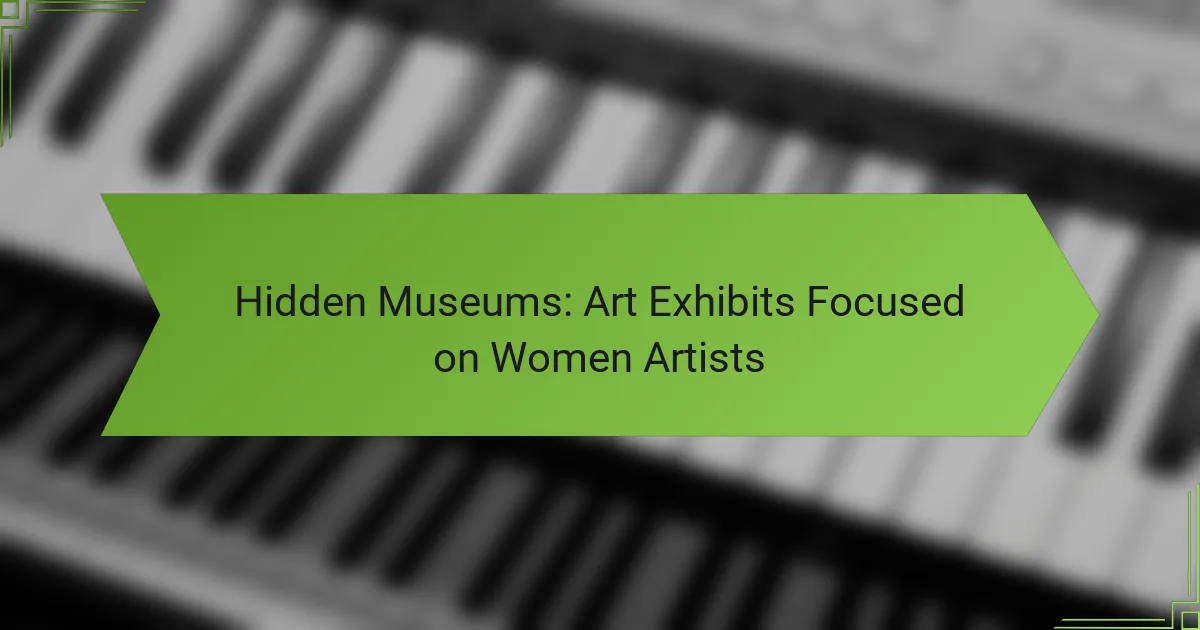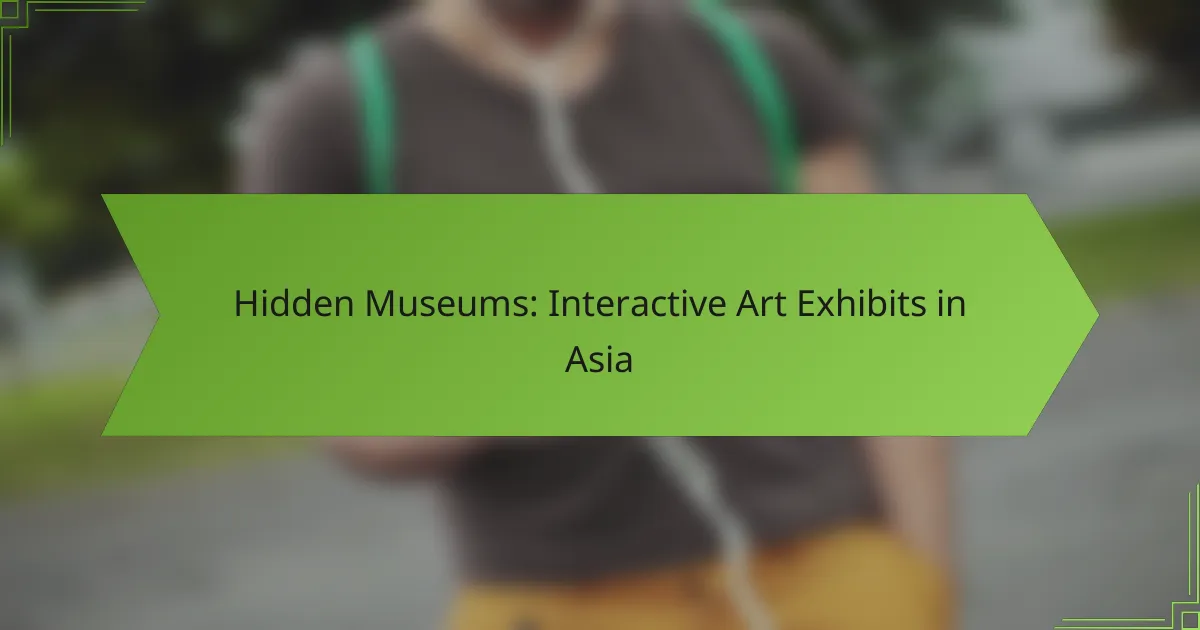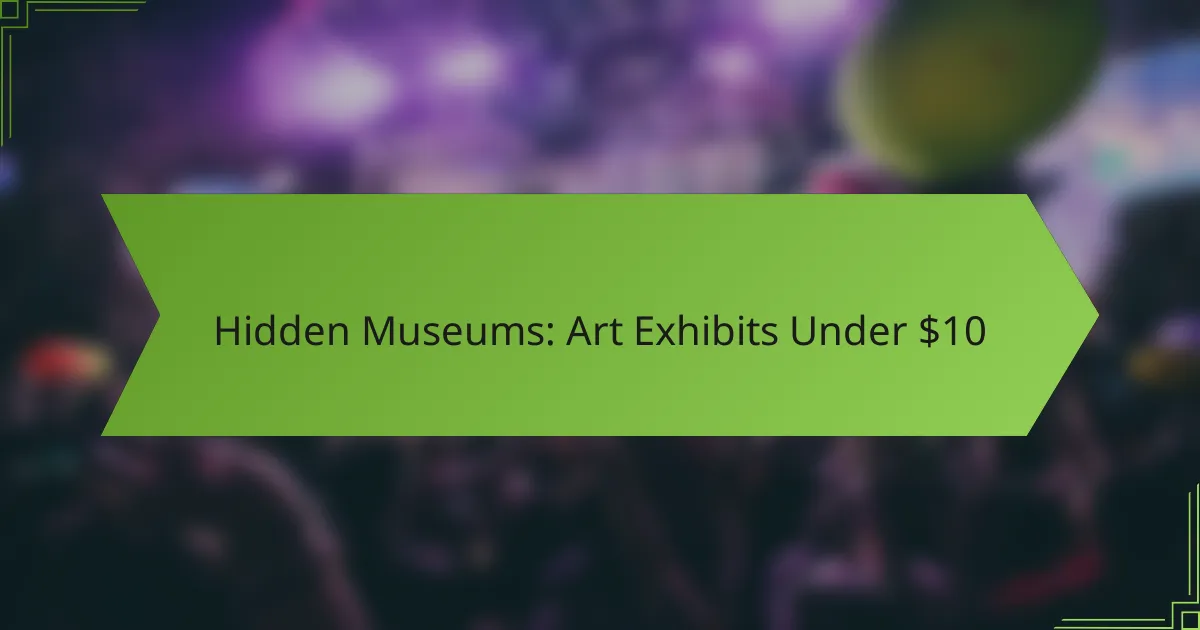Hidden museums dedicated to women artists offer a vital glimpse into the often-overlooked contributions of female creators to the art world. These unique spaces not only celebrate their work but also provide an intimate setting for visitors to engage deeply with the stories and perspectives of women in art. By highlighting these artists, hidden museums play a crucial role in reshaping the narratives of art history and promoting greater visibility for women in the creative field.
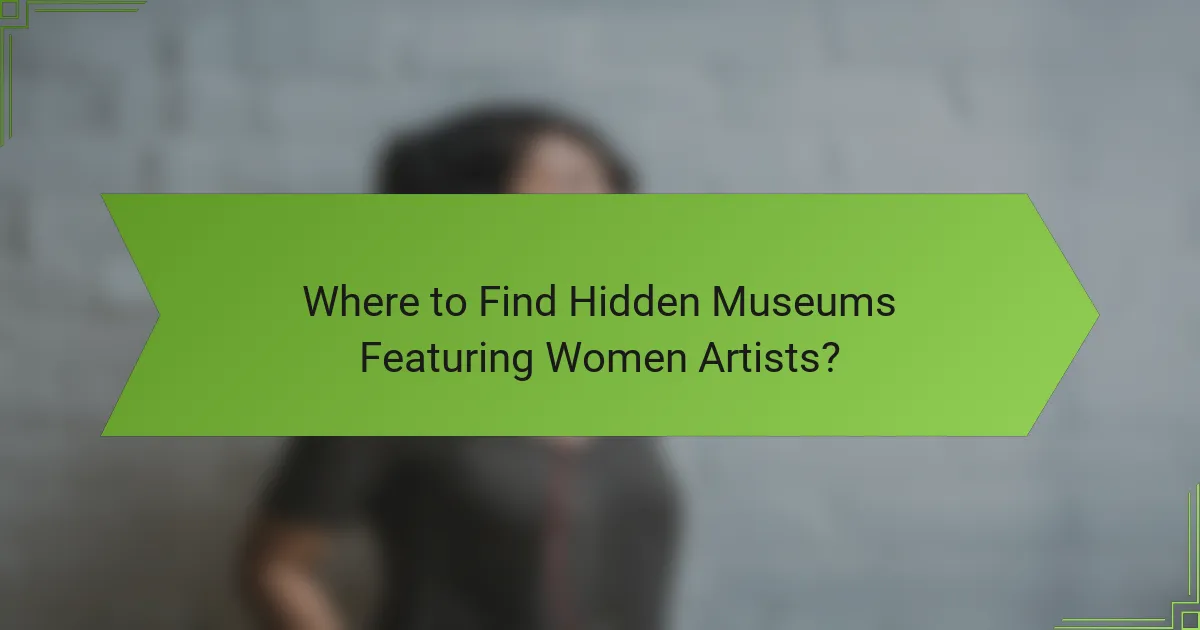
Where to Find Hidden Museums Featuring Women Artists?
Hidden museums dedicated to women artists can be found in various cities, showcasing their contributions to art and culture. These spaces often provide unique perspectives and highlight the work of female creators who have been historically overlooked.
New York City: The Elizabeth A. Sackler Center
The Elizabeth A. Sackler Center for Feminist Art, located within the Brooklyn Museum, focuses on the contributions of women in the art world. It features exhibitions that explore feminist themes and the impact of women artists throughout history.
Visitors can expect to see a range of works from both contemporary and historical artists, alongside educational programs that promote discussions about gender and art. The center often hosts events, making it a vibrant space for learning and engagement.
Los Angeles: The Women’s Center for Creative Work
The Women’s Center for Creative Work in Los Angeles serves as a hub for women artists and creatives. This center emphasizes collaboration and provides resources for women to develop their artistic practices.
It offers workshops, exhibitions, and community events that foster a supportive environment for female artists. The center is an excellent place to connect with other creatives and participate in discussions about women’s roles in the arts.
Chicago: The National Museum of Mexican Art
The National Museum of Mexican Art in Chicago features a significant collection of works by women artists, particularly those of Mexican heritage. The museum highlights the intersection of culture and gender through its exhibitions and educational programs.
Visitors can explore various artistic expressions, from traditional to contemporary, and engage with the narratives that shape the experiences of women in the Mexican art scene. The museum often collaborates with local artists to showcase new works and perspectives.
San Francisco: The Contemporary Jewish Museum
The Contemporary Jewish Museum in San Francisco includes exhibitions that focus on women artists and their contributions to contemporary art. The museum’s programming often highlights themes of identity, culture, and community through the lens of female creators.
With rotating exhibitions and special events, the museum provides an engaging space for exploring the diverse voices of women in the arts. Visitors can participate in workshops and discussions that further enrich their understanding of the art on display.

What Are the Benefits of Visiting Hidden Museums?
Visiting hidden museums that focus on women artists offers unique insights into their contributions to art and culture, while also supporting their visibility in the art world. These museums often provide a more intimate experience, allowing for deeper connections with the artwork and the stories behind them.
Support for Women Artists
Hidden museums often prioritize showcasing the works of women artists, providing them with a platform that is frequently overlooked in mainstream galleries. By visiting these spaces, you contribute to the financial sustainability of these artists and help elevate their profiles in the art community.
Many hidden museums operate on limited budgets and rely on visitor support. Your admission fees and purchases directly impact the ability of these institutions to host exhibitions and support women artists through grants or commissions.
Unique Art Experiences
Hidden museums typically offer unique art experiences that differ from larger, more commercial galleries. These venues often feature rotating exhibits, allowing visitors to see fresh works and lesser-known pieces that tell diverse stories.
Additionally, the smaller scale of hidden museums often leads to more personal interactions with curators and artists, enhancing your understanding of the art and its context. This intimate setting fosters a deeper appreciation for the nuances of each piece.
Community Engagement
Many hidden museums actively engage with their local communities through workshops, talks, and collaborative projects. This involvement creates opportunities for dialogue around women’s contributions to art and culture, fostering a sense of community ownership and pride.
Participating in events at these museums can also connect you with like-minded individuals who share an interest in supporting women artists. Engaging with the community can lead to enriching discussions and collaborations that extend beyond the museum walls.
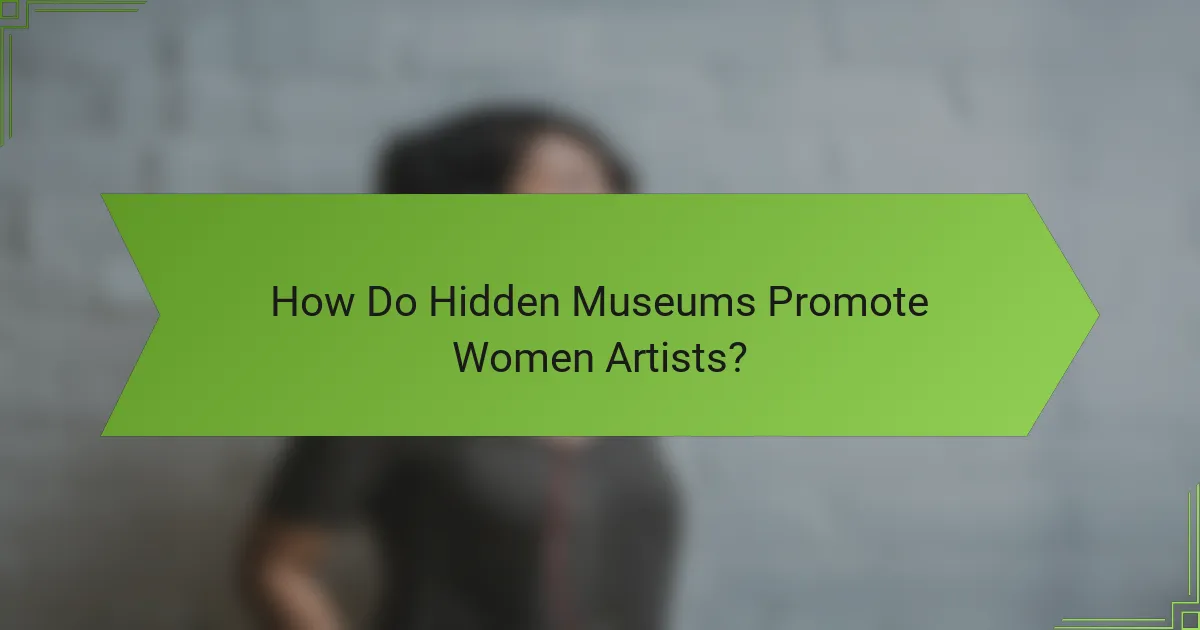
How Do Hidden Museums Promote Women Artists?
Hidden museums play a crucial role in promoting women artists by showcasing their work in spaces often overlooked by mainstream art institutions. These venues provide a platform for female creators to gain visibility, connect with audiences, and challenge the traditional narratives of art history.
Exhibitions and Installations
Hidden museums often curate exhibitions that focus exclusively on women artists, highlighting their contributions across various mediums. These exhibitions can range from solo shows to group displays, allowing for a diverse representation of styles and themes. By creating immersive installations, these museums engage visitors and foster a deeper appreciation for the artists’ work.
For example, a hidden museum might feature an installation that combines visual art with performance, encouraging interaction and dialogue around gender and identity. This approach not only showcases the artists but also invites the audience to reflect on their experiences and perspectives.
Educational Programs
Many hidden museums offer educational programs designed to raise awareness about women artists and their impact on the art world. These programs can include workshops, lectures, and guided tours that emphasize the importance of female representation in art. By providing resources and opportunities for learning, these museums empower visitors to engage critically with the material.
Workshops may involve hands-on activities where participants can create their own art inspired by women artists, fostering a personal connection to the subject matter. Additionally, lectures by art historians or curators can provide context and depth to the exhibitions, enhancing the overall experience.
Collaborations with Local Artists
Collaboration with local artists is a key strategy for hidden museums to promote women artists. By partnering with female creators in the community, these museums can showcase a wider range of talent and perspectives. This not only enriches the exhibitions but also strengthens ties within the local art scene.
Such collaborations might include artist residencies, where women artists are invited to create new work on-site, or community events that celebrate local female talent. These initiatives help to build a supportive network and encourage ongoing dialogue about the role of women in the arts.
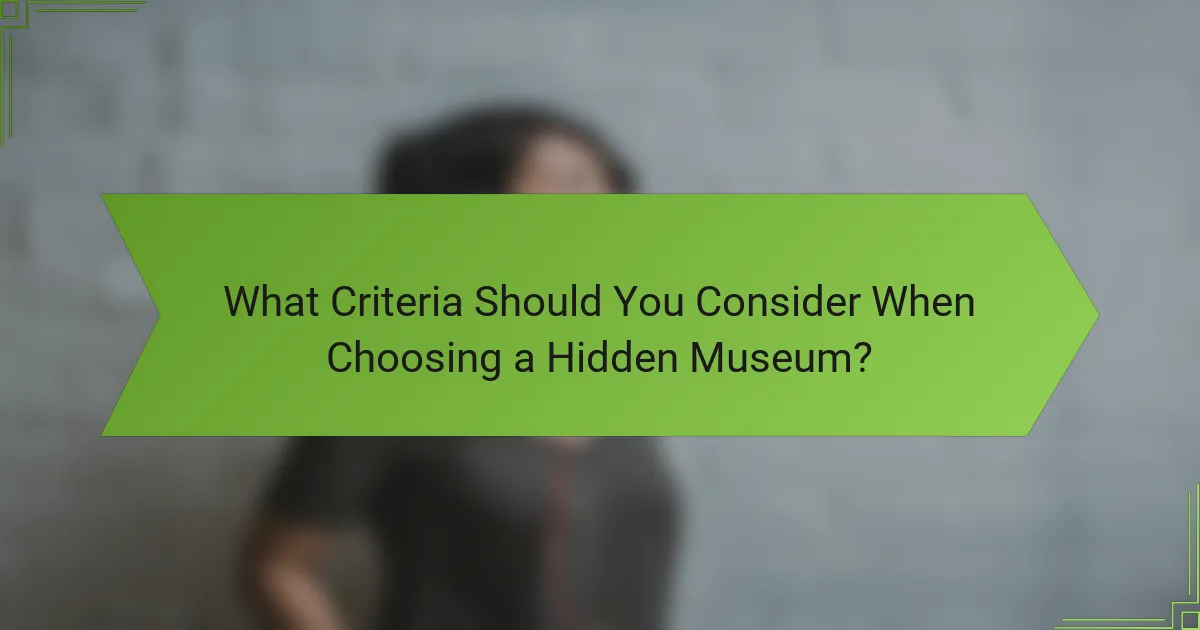
What Criteria Should You Consider When Choosing a Hidden Museum?
When selecting a hidden museum focused on women artists, consider the artistic focus, location accessibility, and visitor reviews. These factors will help ensure a meaningful and enjoyable experience that highlights the contributions of women in the art world.
Artistic Focus
The artistic focus of a hidden museum is crucial in determining its relevance to your interests. Look for museums that specifically showcase works by women artists, as well as those that explore themes related to gender and identity. Some museums may feature contemporary art, while others might emphasize historical pieces, so choose based on your preferences.
Additionally, consider the diversity of artistic mediums represented, such as painting, sculpture, photography, and installation art. A museum with a broad range of artistic expressions can provide a richer understanding of women’s contributions to the art world.
Location Accessibility
Location accessibility is an essential factor when choosing a hidden museum. Ensure the museum is conveniently located, whether in a city center or a more remote area. Check for public transportation options, parking availability, and any potential accessibility challenges for individuals with disabilities.
Consider the museum’s operating hours and any special events that may affect your visit. Some hidden museums may have limited hours or require advance reservations, so planning ahead can enhance your experience.
Visitor Reviews
Visitor reviews can provide valuable insights into the quality and atmosphere of a hidden museum. Look for feedback on the museum’s exhibits, staff knowledge, and overall experience. Online platforms like TripAdvisor or Google Reviews can help you gauge the general sentiment of past visitors.
Pay attention to comments regarding the museum’s focus on women artists, as well as any unique features that may enhance your visit. Positive reviews can indicate a well-curated experience, while negative feedback may highlight potential drawbacks to consider before making your choice.
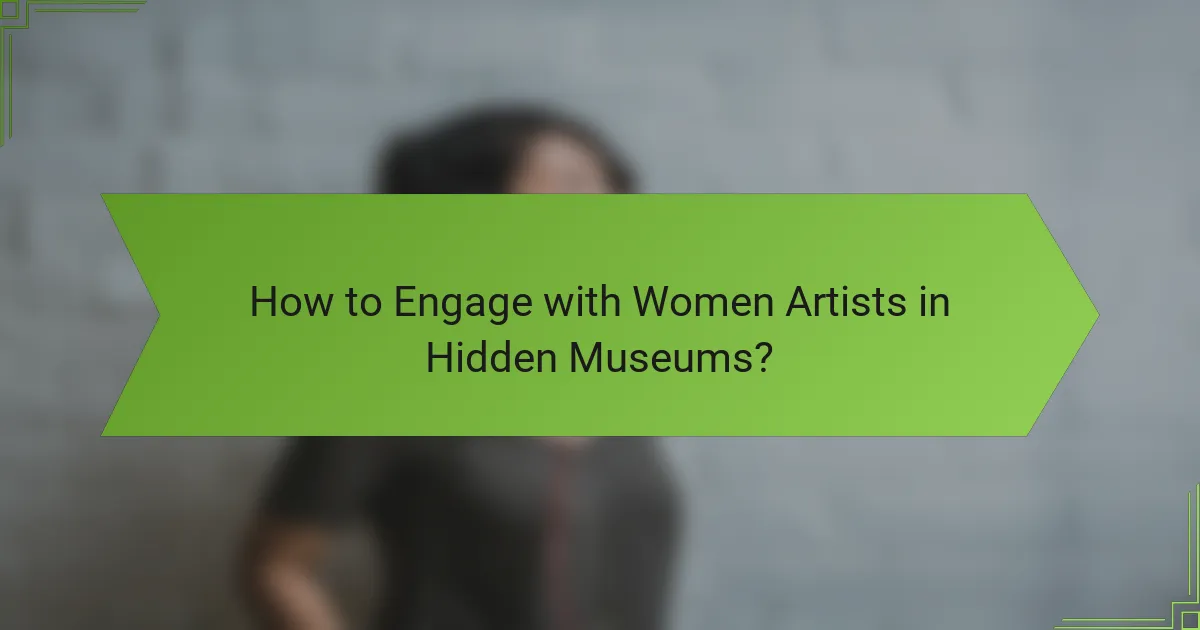
How to Engage with Women Artists in Hidden Museums?
Engaging with women artists in hidden museums can be a rewarding experience that deepens your appreciation for their contributions to art. You can participate in various activities such as workshops and guided tours that highlight the work and stories of these artists.
Attend Workshops
Workshops in hidden museums often provide hands-on experiences that allow participants to explore different art techniques and mediums used by women artists. These sessions can range from painting and sculpture to digital art, catering to various skill levels.
Look for workshops that are led by female artists or art educators who can share personal insights and techniques. Many museums offer these workshops at affordable rates, sometimes even including materials in the fee.
Participate in Guided Tours
Guided tours in hidden museums often focus on the works of women artists, providing context and narratives that enhance your understanding of their contributions. These tours can vary in length, typically lasting from one to two hours, and may include discussions about specific pieces or broader themes in women’s art.
Check the museum’s schedule for tours that specifically highlight women artists, as these can offer unique perspectives and stories that are often overlooked in mainstream art discussions. Consider booking in advance, as these specialized tours can fill up quickly.
